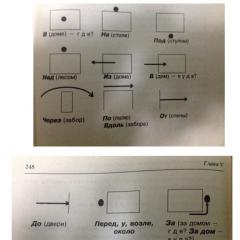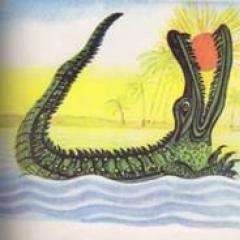Presentation of reservoirs around the world. Presentation on the topic: "the world around us water on earth salt water reservoirs oceans - oceans - the largest reservoirs on earth the largest reservoirs on earth - a quiet ocean - the Atlantic."
To use the preview of presentations, create yourself a Google account (account) and log into it: https://accounts.google.com
Slide captions:
Guess the riddles: Slightly trembling in the breeze The ribbon is in the open, The narrow tip is in the spring, And the wide one is in the sea. RIVER I run to the river to my mother And I can’t be silent. I am her own son, And I was born in the spring. A CREW Widely wide, Deep deep, Day and night beats on the shore. Water is not drunk from it, Because it is not tasty - And bitter and salty. SEA You will not pass, you will not pass - You will go around the side. And you can't drink water With a bluish film. SWAMP Young birches Their own before him Correct their hairstyles. And the month, and the stars - Everything is reflected in it ... What is this mirror called? POND
Name it in one word. RIVER SEA BOLOTO POND STREAM Reservoirs. - What other bodies of water are there? LAKE OCEAN CANAL RESERVOIR
Explain the diagram. WATERS Natural Artificial? Made by nature Made by man Give examples of water bodies for each group. River, sea, lake, ocean, swamp. Pond, canal, reservoir
Pair work. Discuss why people create artificial reservoirs.
Ponds are created for breeding fish and waterfowl.
Canals are created to shorten water routes and to redirect water flow.
Reservoirs are created for the accumulation and storage of water for the purpose of its use in the national economy.
Work according to the textbook. Read the text "Parts of the River" on page 81 of the textbook. What parts of the river did you learn about? Source Riverbed Banks Estuary Part of the river.
Parts of the river. What is the name of the beginning of the river? Source What is the mouth of a river? The place where the river flows into another river, into a lake or sea, is called the mouth. Estuary What is a river bed? A channel is a depression along which a river flows. The river has a right and a left bank. How to define them? If you look in the direction of the river flow, then the right bank will be on the right, and the left bank on the left. Right Bank Left Bank On its way, the river meets other rivers and streams, which flow into it and give up their water. They are called tributaries. Left tributary Right tributary
In the summer, the heroes of our textbook, Seryozha and Nadia, together with their dad, visited the countryside. They examined the local rivers Neznanka and Osetrik, as well as Lake Krugloye. The guys drew up a diagram of the location of the lake and rivers.
Pair work. Where does the river Neznanka flow into? Where does the Osetrik River flow into? Which river is a tributary? Determine the direction of the flow of the rivers Neznanka and Osetrik. Review the diagram on page 82 of the tutorial and answer the questions.
Examination. The Neznanka River flows into ... Lake Krugloye. The Osetrik River flows into ... the Neznanka River. The tributary is ... the Osetrik river. Show the directions of the rivers Neznanka and Osetrik.
Think! How is a river different from a lake? The lake is a natural body of water with stagnant water. The river is a permanent watercourse.
Check yourself. What is the source of the river? The source of the river is its beginning. Show on the diagram the sources of the Neznanka and Osetrik rivers. Show on the diagram the right bank of the Neznanka River. What is a river mouth? An estuary is where a river flows into another river, lake or sea. Show on the diagram the mouth of the Neznanka and Osetrik rivers. Show on the diagram the left bank of the Neznanka River.
summaries of other presentations
"Riddles about animals with answers" - Animals. Pig. Touching the grass with his hooves, a handsome man walks through the forest. Gray, evil prowls through the forest. Cow. In summer he walks without a road near pines and birches, and in winter he sleeps in a den. Birch. Riddles. A squirrel is a squirrel. Who has a patch that is not clenched into a cam. Wild and domestic animals. Who are the wild animals? Animals are our smaller brothers. On the branches gallops, but not a red bird, but not a fox. In the middle of the yard there is a shock: a pitchfork in front, a broom in the back.
"Herbaceous Plants" - Lungwort unclear. The raven eye is four-leafed. Creeping tenacious. The wrestler is blue. Stone berry. Siberian hogweed. Daisy. European hoof. Herbaceous plants forests. Highlander serpentine (serpentine). Stinging nettle. Cobweb burdock. Zelenchuk yellow. Buttercup creeping. Angelica forest.
"Birds' beaks" - Species composition birds. Bibliographic method. Knowledge about birds. We study books. Changing the beaks of finches. The beak defines the bird's "profession". Hummingbird. Whale-head stork. Dissimilar beaks. Without a beak, a bird is not a bird. Water cutters. Get to know the diversity of the bird world. Cutwater. The world. Hawaiian flower girls. Class of vertebrates. Heron. School scientific and practical conference... Birds need beaks not for beauty.
Birds. Moles are not blind at all. Whale milk. Unique circulatory system giraffe. Material. Warm time of the year. Interesting Facts from the life of animals. Elephant brain. Parrots. Why do crocodiles swallow stones.
"The meaning of air" - Man needs air. Knowledge about the air. Air properties. Air is everywhere. Surface of Mars and Moon. The air we breathe. Air has no weight. Oxygen is needed for breathing. Air transparency. Description of the experiment. Air has no resistance. The air presses equally in all directions. Atmosphere of the Earth. Air. Air composition. Compressibility and resilience. The importance of air. Constant air currents.
"Signs of Winter" - On a visit to winter. Feed the birds in winter. The hat runs in the woods. Our winter is very different. Meteorologists. Train the birds in the frost to your window. Who walks in cold winter, angry, hungry. Powdered the tracks. Sly cheat. Rebus. Bird life in winter. White birch. Folk omens... Advice. Dialogues about animals. December. No arms, no legs, but he knows how to draw. The breeze blows. If you want to be healthy, be tempered. January.











The Miass River The Miass River originates on the eastern slopes of the Ural Mountains, first flows between the mountains to the north. Turning east at Karabash, it crosses the entire forest-steppe zone and flows into the Iset River outside the region. Its length within our region is 330 km. The depth of the river reaches 3 meters. The Argazinskoe and Shershnevskoe reservoirs were built on the river.


LAKES Baikal Caspian Sea (lake) Lake Onega Lake Ladoga Taimyr White Lake The lake does not grow shallow, It just loses its voice, it grows numb, It just loses its voice, it grows numb, And it does not lose the shore - It does not trust a person! Ecology won't help. No. I'm going to bet. We are disappearing, oh my God, Soar Lake!


Turgoyak One of the most picturesque lakes in the Urals. The blue mirrored surface, as in a mirror, reflects the tops of mountains, tree crowns, clouds. The area of the lake is 26.4 km2, length - 6.9 km, width - 6.3 km, maximum depth - 30 meters. Turgoyak is a flowing body of water, several rivers and streams flow into it. The lake is fed not only by surface, but also by underground waters coming from springs. One of the most picturesque lakes in the Urals, the blue mirrored surface, as in a mirror, reflects the tops of mountains, tree crowns, clouds. The area of the lake is 26.4 km2, length - 6.9 km, width - 6.3 km, maximum depth - 30 meters. Turgoyak is a flowing body of water, several rivers and streams flow into it. The lake is fed not only by surface, but also by underground waters coming from springs.

Uvildy This is the most large lake in the Urals. The lake is km long and 9 km wide. In shape, this lake resembles a pear. Large and deep, the lake warms up very slowly, the water in it is always cold. Bathing season lasts only a month - from July 15 to August 15. There are a large number of islands on the territory of this lake.




Swamps and glaciers - storerooms fresh water Continuous ice fields are on the North and South Poles Earth. Ice mountains - icebergs float in the oceans. Continuous ice fields are at the North and South Poles of the Earth. Ice mountains - icebergs float in the oceans. Glaciers are formed and high in the mountains. Glaciers are formed and high in the mountains.

Reservoirs are natural or artificial accumulations of water, which can be of a permanent or temporary nature, ornamental purpose and settle down in parks and gardens. The runoff of reservoirs is slow or absent.
Rivers are classified as streams because they have a constant, sometimes strong, current.
Natural bodies of water: lakes
Ponds are fresh water bodies. To simplify the outflow excess water form artificial drains. Ponds are often found in countryside... Here they have a certain economic role - fish farming, water storage for irrigation, and sometimes washing.
There are two types of ponds: dug and dam. Inhabitants of reservoirs - protozoa, algae, fish. Special ponds are created for breeding valuable fish species - trout, sturgeon, stellate sturgeon. Reservoirs are specially cleaned, they form their own ecosystem.

The importance of reservoirs
Reservoirs are artificial reservoirs formed to store water on an industrial scale. Channel and lake reservoirs are distinguished, depending on their origin. They can also be covered, open and dam.
The world's largest Rybinskoye - in Russia, Smallwood - in Canada, Nasser - in Egypt and Sudan. The creation of such reservoirs has enormous consequences, but not always positive ones. The main one is a radical change in the landscape. This applies to both fauna and flora. Negative influence they affect the spawning conditions of fish.
Not the best consequence of the creation of such reservoirs is the siltation of reservoirs. The process is the formation of large sediments, sediment at the bottom. at the same time it decreases. This process has been studied in detail because it harms the ecosystem. At the same time, the inhabitants of reservoirs can change.

Where do old women come from?
Old women as natural reservoirs are part of the channel where the river used to flow. Another name is Old Speech. Such reservoirs often have a bizarre shape - a sickle or crescent, a loop, a curl. How are old women formed? The formation process occurs when, due to some reason, the channel straightens, and the previous curl or curvature remains cut off from the main reservoir. main reason- floods when the river finds a more convenient route.
Sometimes the bends of one river unite - this is how oxbows can also form. Such a process takes place in the presence a large number sleeves. The entrances to the oxbow are gradually covered with silt, and the reservoir itself turns into a lake or swamp. In the presence of power, it can function, in the absence of it, it can dry out. The largest oxbows can be over 500 meters long.
What do water bodies eat?
The type of food is one of the main characteristics of the reservoir. He can characterize its structure and function.
How can reservoirs feed? Firstly, by external surface runoff - by rains and other hydro-objects. Secondly, which can come close to the surface. Thirdly, artificially - the basin of the reservoir is filled forcibly. Fourth, recharge with combined water.
Groundwater feeding is the most environmentally friendly because it is clean. If the lake has such nutrition, then duckweed and ooze will be less likely to form in it. The most common type of food is combined.
The guarantee of constant filling with water is the compulsory implementation of this process. Fill the reservoir with either tap or irrigation water. The most frequent meals are combined. Its sources can be rain, melted snow, groundwater and much more.

Reservoirs and their location on the ground
Water bodies are hydro-objects located in a certain area. Where can they form? Places of formation, for example, a lake, can be a reservoir can be dam or dug. Power is supplied, as a rule, from the river. Slope, watershed, floodplain water bodies are formed on the relief. In such cases, the relief of the lake or pond is clearly visible.
In the floodplain, reservoirs are formed with underground feeding, combined, channel. They can form in the oxbow where the sluices are installed. A dam and pumps can also be located here in order to use such a reservoir in industry.
Slope reservoirs are formed on the territory of river valleys terraces. They differ from others only in some design features.
In the areas of the watershed, watershed reservoirs are arranged. They can eat groundwater or artificially. Forced water can be supplied from a river or a well.
There are also bodies of water in embankments or cuttings. They are quite widespread, they are easy to form and organize their nutrition. They can be of any size. They are quite expensive to build.
In embankments, reservoirs are mainly used for storing water. Such an object can become the basis for a hydroelectric power plant.
Creation of a decorative reservoir
Decorative pond - what is it? This is an artificial water body that serves as a decoration for the site, forming its complete appearance. Most often, owners of private houses and summer cottages come to the idea of creating a decorative reservoir.
Artificial ponds are beautiful and stylish. What you need to know for successful establishment such a decoration of the site?
To create a reservoir with your own hands is a feasible task for everyone. Form, design of such cozy corner Gardens can be very diverse. An artificial reservoir will perfectly fit into any landscape, it can become its constructive dominant.
To begin with, choose a place not very close to home (it is better to consult with specialists landscape design). Close proximity to the house can harm the foundation.
You need to create a project. To do this, define the shape of the reservoir: an oval, rectangle, or an intricate shape. The project will make it possible to determine the costs, materials, location of filtration systems. Next, you should choose high-quality materials - the durability and beauty of the pond depends on them.

When everything is selected and purchased, proceed. Preferably, not by yourself, but with the help of qualified specialists. The final stage is plant decoration. This will complete the look of the perfect pond. You will get a gorgeous pond - the photo below represents one of the possible options for your garden.
Conclusion
Ponds, natural or artificial, are functional, but they can also be the perfect, beautiful addition to your garden design.
An aesthetic pond near your home will allow you to express your individuality and emphasize the style of the garden. Especially popular is the creation of such elements in the Japanese, classic, rustic style. The main thing is to correctly arrange the pond. Sometimes fish live in such reservoirs. The presence of the inhabitants of such miniature lakes is a matter of taste for the owners of the garden.



